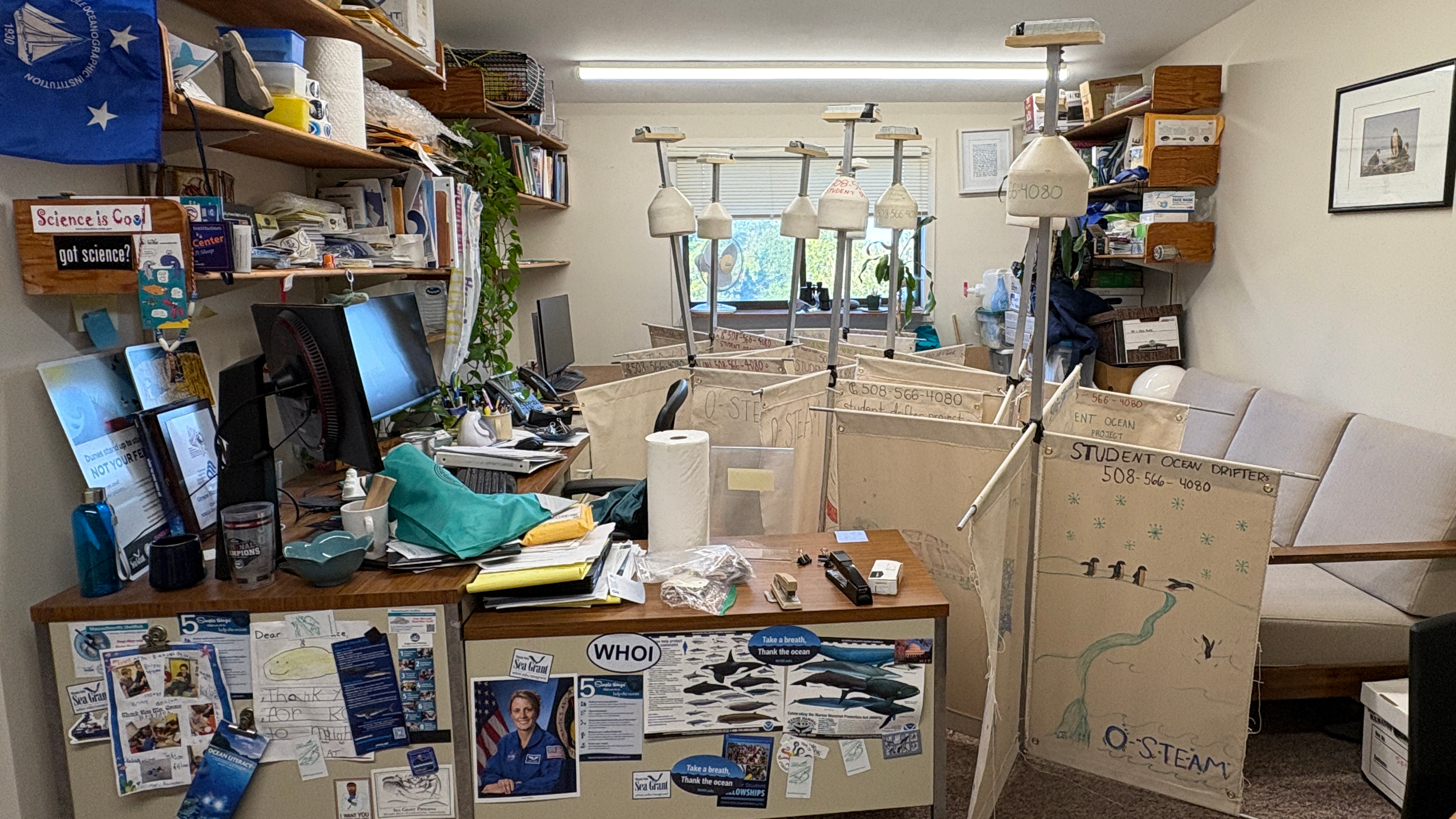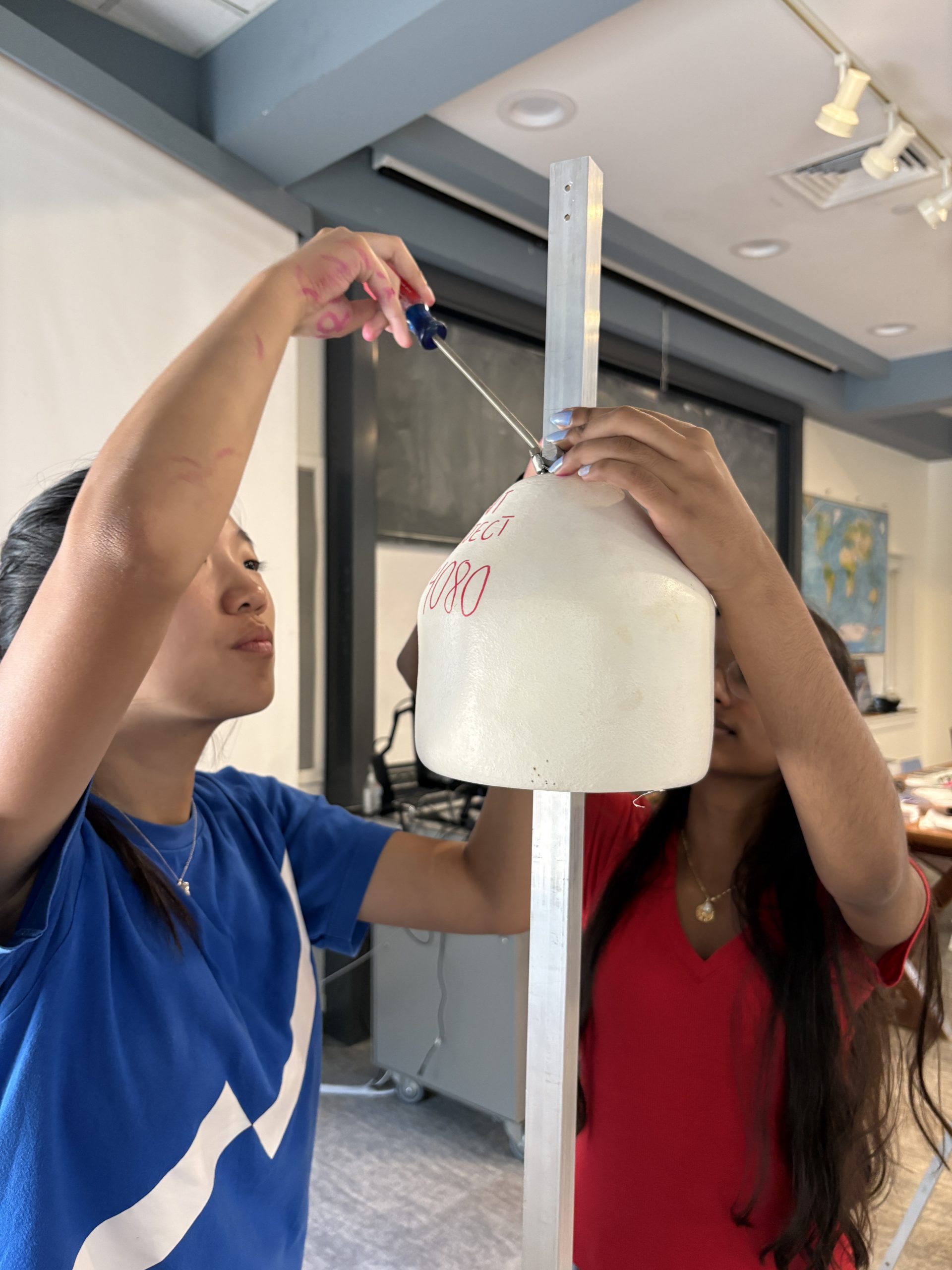Post 1: Building the Drifters

As a part of this summer’s O-STEAM program, I was able to spend a day with the fellows talking about how drifters can be used to study the transport of water within Cape Cod Bay. Drifters have been used by oceanographers to track ocean currents for more than four decades. They're relatively inexpensive, versatile, and fairly easy to build!
Our goal for the day was three-fold:
- Interpret findings from previous model-based studies of transport
- Identify how observations from drifters can be used to validate models
- Build drifters that will be deployed in Cape Cod Bay.
For more information on points 1 and 2, see our blog's homepage. For additional details on point 3, keep reading!
For those unfamiliar with the term “drifter,” a drifter is an oceanographic instrument made up of a GPS transmitter, a surface buoy, and a subsurface sail or “drogue.” Due to the sub-surface sails, drifters move with the water, following ocean currents and relaying their position every 20 minutes from the GPS transmitter that sits on a frame above the water. The recorded positions allow scientists to calculate the current velocities at a specific location. Over time, this makes drifters great instruments for understanding complex current systems!
The first step in drifter assembly -- and arguably the most time-consuming! -- was decorating the 32 sails (with four sails per drifter and eight drifters to be built). The fellows surprised me with their creativity and artistic talents. Our drifter sails have it all, from realistic sea creatures -- a turtle, a whaleshark, an octopus, and seahorse, just to name a few-- to even a Twilight-themed drifter!


I'm sure the brightly colored sails will bring joy to those involved in the rest of the deployment process including the scientists at WHOI who walk by them in storage, the ship crew who help put the drifters in the water, and people living on the Cape who might find the drifters washed ashore. Just ask Grace Simpkins who was kind enough to offer her office as short term storage and worked surrounded by them for a few days!
After decorating the sails, we moved on to the assembly steps:
- Sliding the buoy on the main mast. “Sliding” might be a generous term as this required a LOT of force (some used hammers while others preferred hitting the buoy on the ground).
- Attaching the two sets of metal cross bars that hold the sails
- Tying the sails to the cross bars
- Screwing the GPS sensor to the top


Even though I have been a part of organizing previous drifter deployments, I have never had an opportunity to build the actual instruments being used. I was extremely excited to learn alongside the fellows and now have a greater appreciation for the effort that goes into assembling the drifters. It was so rewarding to participate in a program that enables young scientists to actively participate in ongoing research!
Currently the drifters are in storage awaiting their first release. Stay tuned because we plan to deploy four drifters in mid-October and hopefully recover them when/if they hit shore. As long as enough drifters are recovered, we plan to repeat the deployment three more times, aiming for once per season. Once in the water, the drifter's positions will be recorded on the map here for real-time tracking.
